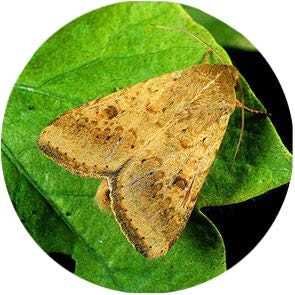


| Latin Name | Helicoverpa armigera |
| Common Name | Cotton bollworm |
| Biology | Adults are nocturnal with strong flight ability, sensitive to black light traps and sex pheromones, and lay eggs on the undersides of leaves. Larvae are highly polyphagous, damaging leaves, flowers, buds, fruits, etc.; infested fruits develop holes, severely affecting yield and quality. This pest occurs 3-7 generations annually, overwinters as pupae in soil, and is a global agricultural pest. |
| Damage | This pest damages multiple crops such as cotton, corn, tomatoes, peppers, and legumes. |
| Distribution Regions | Global cotton-growing regions |
| Monitoring | Pheromone lures mimic natural sex pheromones to attract male insects into specialized traps for population monitoring and suppression. As a core IPM component, monitoring enables early risk detection and targeted control. Mass trapping reduces mating opportunities to curb offspring populations. Protocols: ●Use only with matched traps. ●15-45 traps/hectare,replace/replenish every 4-6 weeks. ●Wear gloves or wash hands with detergent when switching lure types. ●Refer to trap-specific hanging instructions. |
| Recommended Traps | Delta Trap, Wing Trap |

ご連絡先情報をご提供ください。精密にマッチしたフェロモンソリューションをご提供します。当社の既存ポートフォリオに最適なソリューションが見つからない場合、合成化学チームが分子構造設計から量産まで一貫してカスタム開発を実施いたします。